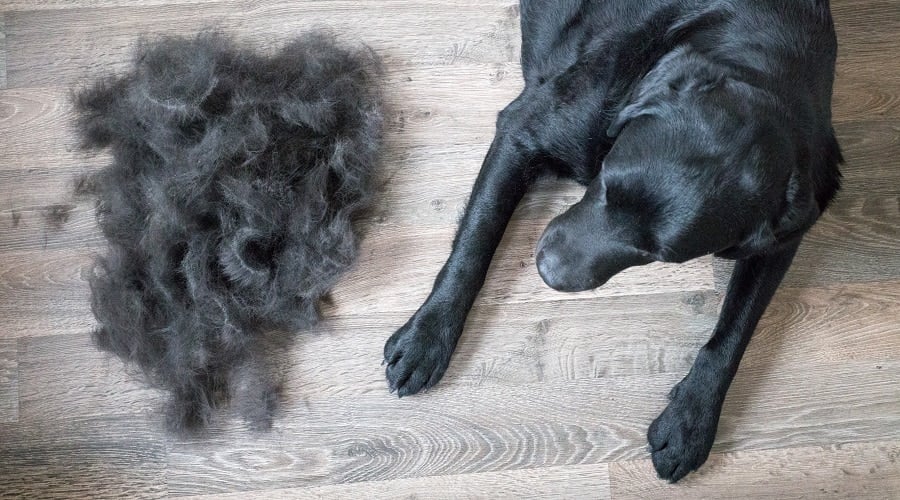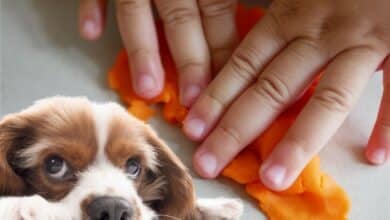My Dog Just Ate a Cornflower! Are Cornflowers Safe Or Toxic To Dogs?
When you purchase through links on our site, we may earn a commission. Here’s how it works.
Did your dog just eat a cornflower while out on a walk or while strolling through your backyard? It’s not uncommon for our canine companions to eat things they shouldn’t. This often happens with plants or many different foreign objects.
Table of Contents
If you’re lucky enough to live near a field with cornflowers, your dog might help himself to a tasty snack. But that could leave you wondering if cornflowers are safe for dogs to eat or whether your pup will suffer any lasting after-effects.
In this article, we look at what to watch for if your dog ate cornflowers. You’ll learn what happens if Fido has eaten too many and when it’s time to make a phone call to your veterinarian.
What Are Cornflowers?
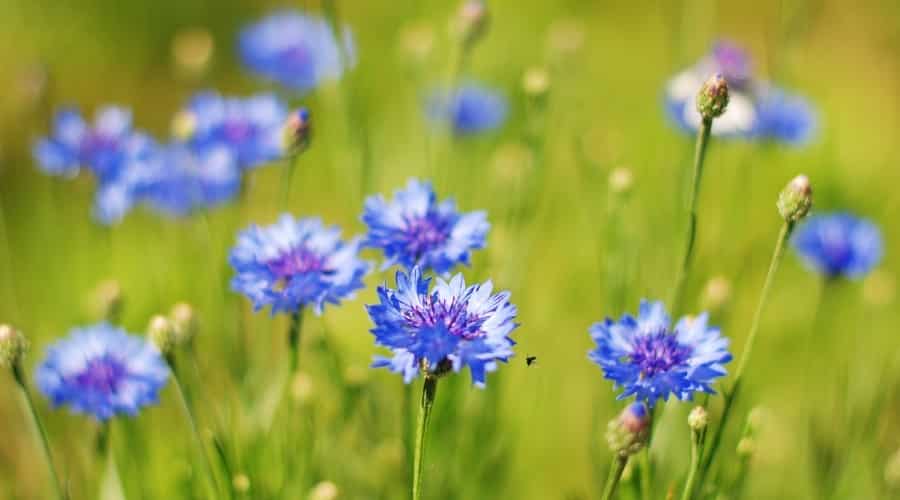
Cornflowers (Centurea cyanus) are a common field-edge wildflower also known as ‘Bachelor’s Buttons’ and ‘Bluebottle.’ The wild versions are usually bright blue, but pink and white versions are available and are often grown by commercial flower farmers for their lovely colors.
The flowers look a little like tiny thistles, although their leaves are not covered in spines or hairs and are far slimmer. You’ll also see them included in wildflower mixes, so they’re becoming more common in verges, parks, and gardens.
I used to run a salad farm with my husband, and one of our specialties was edible flowers, which we sold to restaurants for use in cooking. Cornflowers – grown without pesticides and herbicides – are edible to humans and are often used as a garnish for desserts.
Plants That Look Like Cornflowers
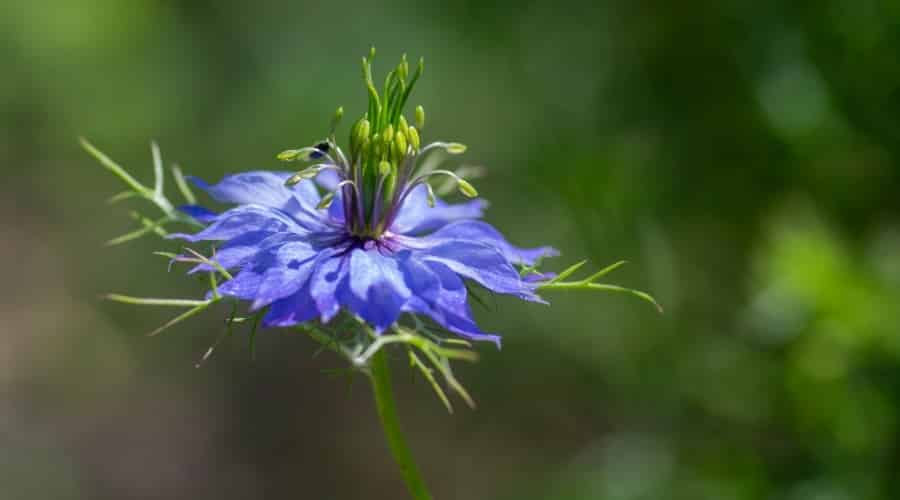
If your pup has eaten a cornflower, it’s important to make sure of the identification of the plant. While there aren’t many true-blue flowers, there are a couple of lookalikes that may also have escaped from gardens or flower farms.
Nigella damascene (Love-in-a-mist) has fine, ferny foliage. While it has no reported toxicity, it’s not listed as safe, either. It doesn’t tend to grow wild but is popular in gardens and flower farms. Borago officinalis, or borage, grows wild in hedgerows and field-edges and also has blue flowers. Borage flowers are star-shaped, and the leaves are broad and hairy. While borage flowers are edible for humans, they can cause vomiting and salivation if eaten by dogs, so double-check that your pup has definitely eaten cornflower, not borage.
Another plant that commonly gets confused with cornflower is coneflower – not because they look alike, but because the names sound so similar. Coneflower (Echinacea) plants are tall, with large, daisy-like flowers in purple, white, or a range of other colors. Unlike daisies, whose petals face upward, the coneflower petals droop downwards, giving it the name.
Are Cornflowers Poisonous To Dogs?
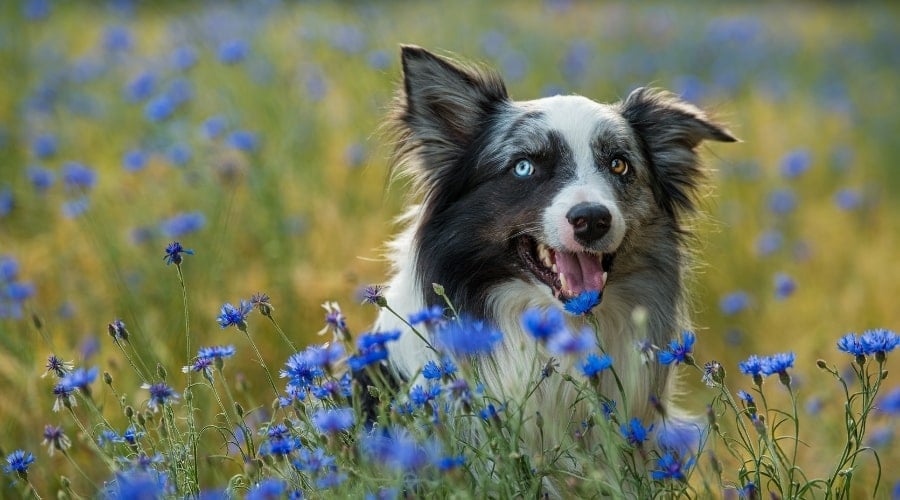
The ASPCA lists cornflowers as non-toxic to dogs (and cats – although the Pet Poison Helpline lists it as toxic to cats), and it even makes it onto lists of dog-safe plants. However, eating any sort of plant material can cause vomiting due to irritation of the stomach, so you may see some stomach upset.
Cornflower joins other pet-safe plants that are fine to have around your garden. Some of these include petunias, sunflowers, and lilacs. They make a good choice for gardens, in my experience, with their main downside being that they are annuals – although they may self-seed, you might need to re-sow them each year.
Chemicals On The Cornflower
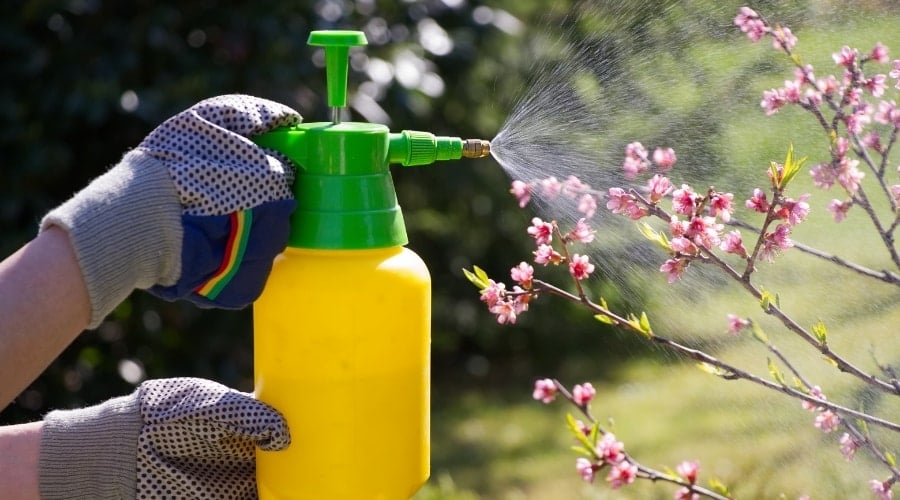
You should also be aware of any chemicals that may have been used on the land. While most wildflower meadows are fairly chemical-free, wild cornflowers growing at the edges of fields may be subject to herbicide and pesticide drifts. While these should be very small amounts, it’s worth being aware of signs related to weedkiller and pesticide poisoning in dogs.
Fertilizers are not usually necessary for cornflowers but may have been used on nearby plants, especially on a flower farm. Some fertilizers can be toxic, even when ‘natural’ – my own dog became quite ill after helping herself to blood-and-bone fertilizer applied to our salad beds.
My Dog Ate A Cornflower: What Now?
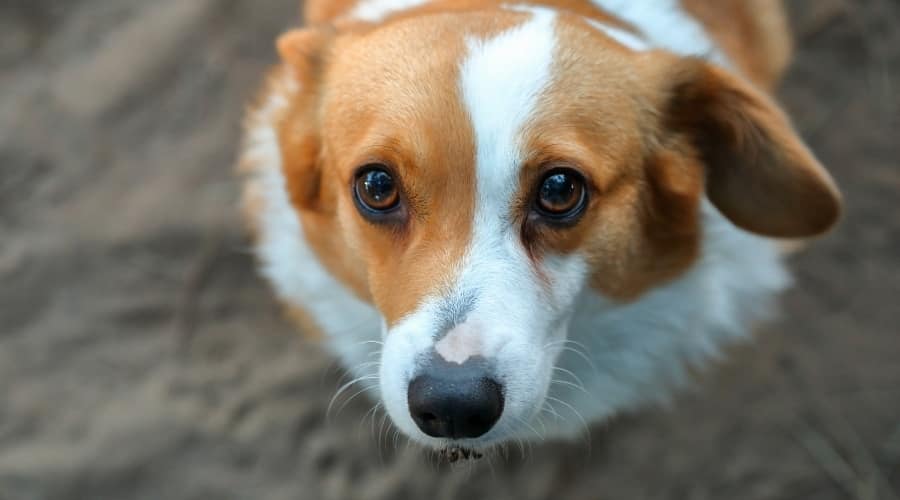
If Fido ate some cornflower, you don’t need to panic. Cornflowers are not toxic to dogs. Here’s a step-by-step checklist to make sure there’s nothing to worry about.
Step #1: Stop Fido From Eating The Plant
Stop your dog from eating the plant, and check them over – are they drooling, or is their mouth irritated? You may need to separate Fido from the plant by securing them in another room or area that’s free of the plant.
Step #2: Analyze What Was Consumed
Look for the evidence – what is it they were eating? If you’re sure it’s a cornflower, great. But it’s worth checking other similar-looking plants. You want to make sure there’s nothing else it could be.
Step #3: Check The Surrounding Area
Check the surrounding area to make sure it was only cornflower that was consumed. These are often part of a wildflower mix and might be growing close to other, more toxic plants.
Step #4: Watch For Symptoms
If you know it was only cornflowers ingested and Fido’s not showing any signs, you can take him home to monitor him. Keep an eye on him for 24 hours in case he develops after-effects. The irritation could come from the fiber or from the plant. Unfortunately, there’s no way of telling whether any chemicals were recently used in the area, so you should also keep an eye out for signs of weedkiller and pesticide toxicity.
Step #5: When in Question, Always Call Your Veterinarian
If Fido starts to vomit, it’s likely to be short-lived and mild. Offer food a little and often, but don’t be surprised if he doesn’t want it immediately. If he continues to vomit, can’t keep food or water down, becomes lethargic, or develops other signs, you’ll need to visit the vet.
Will My Dog Be Okay?
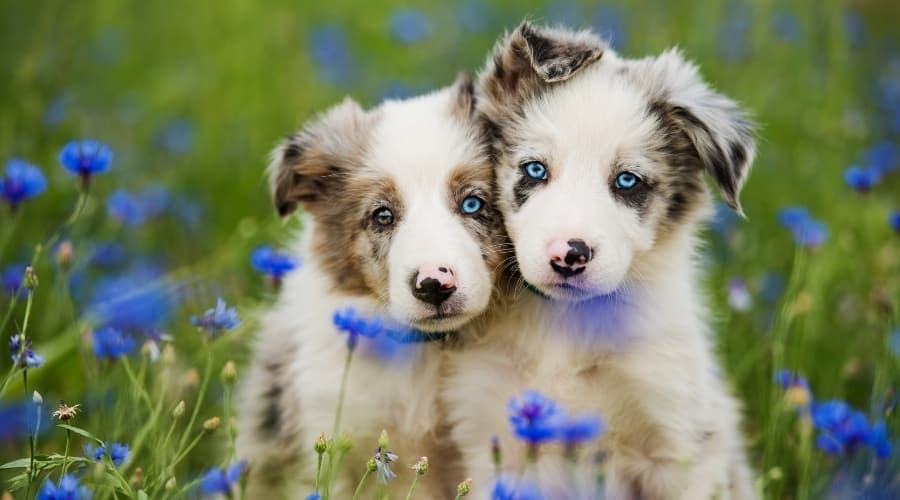
Cornflowers are thought to be non-toxic to dogs, so most dogs will be fine after eating cornflowers. However, occasionally dogs will develop vomiting or diarrhea. This can happen due to the amount of fiber they’ve consumed. It can also happen due to the strands of plant material irritating their intestines. This vomiting and diarrhea is usually mild and stops quickly. But you should contact your vet if your pup displays other symptoms, doesn’t stop vomiting, or becomes lethargic.
If the bachelor’s buttons had been sprayed with weedkiller or pesticide, you may see other signs, including sores, itchy skin, strained breathing, restlessness, or in serious cases, seizures. While it’s unlikely your canine companion will ingest enough poison to become seriously ill, it’s something to bear in mind, as herbicides and pesticides are much more toxic than cornflowers.
If Fido has eaten a plant that you know has had chemicals applied, phone your veterinarian or the pet poison helpline for advice as soon as possible. If you aren’t sure, it’s ok to monitor at home, but be prepared to act if he becomes ill.
Cornflower Ingestion Prevention
While cornflowers are unlikely to do any harm, it’s still not a good idea to encourage eating them. Try to fence off areas of the garden, especially when your pup is young and inquisitive or after applying fertilizer, weedkiller, or chemical pesticides.
Teach Him to “Leave It”
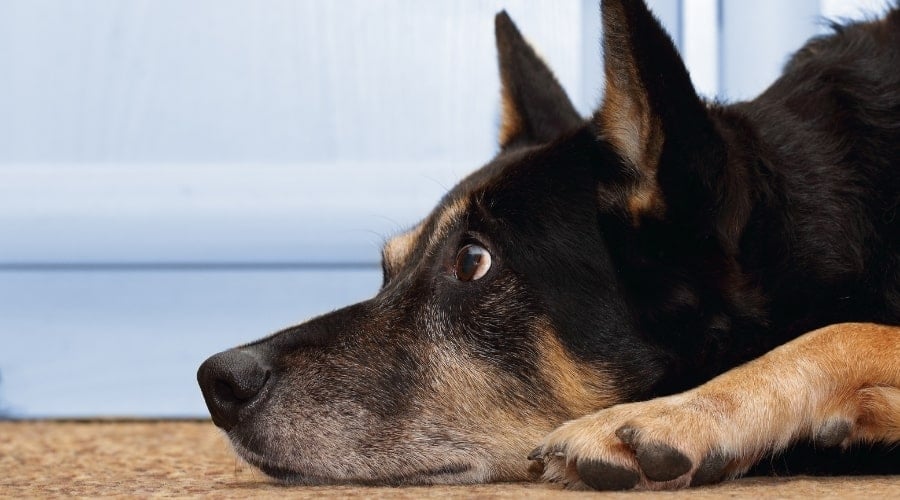
You should also teach your dog a good ‘leave it’ command, which is useful in emergencies. To do this, offer your dog an unexciting treat, such as a piece of his usual kibble, in a closed hand. It’s likely your dog will sniff your hand, then eventually back off in confusion. As soon as he moves away, mark the behavior with a clicker or a ‘good boy.’ Then reward him with a better treat from your other hand.
Repeat this until he ignores the treat in the closed hand. Then add in the command word ‘leave it’ each time. You can then put the unexciting treat on the floor, saying, “leave it.” Then, reward your dog for ignoring or moving away from the treat.
Once this is reliable, try using more tasty treats as the decoy until you can get him to move away from anything you ask him to leave. Don’t forget to practice outside and in different situations so that he remembers what to do.
Frequently Asked Questions
Are cornflowers poisonous to pets?
According to the ASPCA, cornflowers are not poisonous to dogs. However, the Pet Poison Helpline does list them as poisonous to cats. Luckily, cats are much less likely to snack on these pretty flowers than dogs! Cornflowers are also non-toxic to humans and are sometimes used to decorate salads and cakes.
Is “Cornflour” related to cornflower?
Whilst this article is about cornflower, the plant, there is another type of cornflour – flour made from corn husks. This is a gluten-free powder generally added to foods as a thickening agent. Cornflour is not poisonous to dogs but doesn’t add much nutritional value. Some dogs may be allergic to cornflour, but cornflour allergy seems to be rare.
Are bachelor’s buttons toxic to dogs?
Bachelor’s buttons are another name for Centurea cyanus, or cornflower. According to the ASPCA, they are not toxic to dogs, and they appear on many “pet-safe plants” lists. Whilst they are not toxic, eating any plants or flowers can cause a dog to vomit or have diarrhea due to the plant material irritating the intestines.
Final Thoughts
Cornflowers are not known to be toxic to dogs, so if Fido has eaten a cornflower, you likely don’t need to worry. However, they can still cause vomiting and diarrhea, just like any plant.
If your dog has eaten cornflowers, double-check you’ve correctly identified the plant, then monitor him at home for signs of trouble. Most dogs grow out of eating everything in sight, but if you have a Labrador or a similarly greedy breed, you may find you have to block access to your garden plants to prevent them from eating too many.
